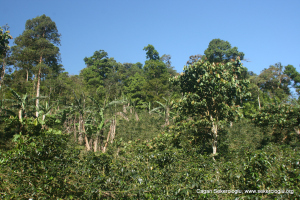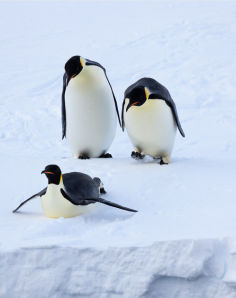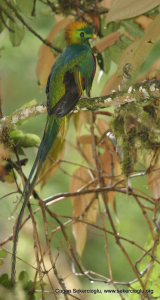Janice Wormworth's Blog
October 12, 2016
Dodos, small islands and climate change
A recent trip to Mauritius, land of the dodo, reminded me of island birds’ special place in the panoply of bird diversity. But birds of islands are acutely vulnerable to human threats, including climate change.
Hothouses of evolutionLike mini laboratories for evolutionary experiments, oceanic islands are where nature tries onunorthodox avian strategies. Take gigantism, which produced the oversize pigeon that was the dodo, and Madagascar’s elephant birds, the largest of their time. Or take fl...
July 28, 2016
Arctic breeding shorebirds at risk in warming world
A new study underscores the climate threat to Arctic breeding birds, while also emphasising how important habitat conservation will be to preserve their shrinking breeding grounds.
Each Arctic summer hundreds of millions of birds arrive in the tundra, to spend long days breeding in this vast treeless plain between polar deserts to the north and the tree line to the south.
Yet as the climate warms, the tree line is expected to march north, radically reducing breeding habitat for many birds rel...
October 11, 2015
Your coffee choice can help forest birds adapt to warming

Shade coffee plantation in Finca El Jaguar in Nicaragua. Image Cagan Sekercioglu.
In Winged Sentinels we highlight the importance of improving bird habitat outside protected areas to help bird populations adapt to climate change.
Bird-friendly coffee plantations are one fascinating way to achieve this. Inhuman-altered landscapes, they can provide hospitable habitat to help birds shift their ranges. This allows their populations to track suitable climate conditions, prey, plants and other reso...
April 7, 2015
Hungry polar bears turn to Arctic bird nests
A major challenge with climate change is predicting how it could cause myriad effects that ‘cascade’ through food chains and ecosystems. A new study about polar bear predation at Arctic bird colonies illustrates one way these knock-on effects can play out.
After observing bird breeding colonies in Greenland and Norway’s Svalbaard Archipelago for more than 40 years, scientists documented an increase in polar bear raids on bird nests in step with reductions in sea ice coverage.
In some years, b...
July 21, 2014
Long slide for emperor penguin populations with global warming

“If sea ice declines at the rates projected by the IPCC climate models, and continues to influence Emperor penguins as it did in the second half of the 20th century in Terre Adélie, at least two-thirds of the colonies are projected to have declined by greater than 50 percent from their current size by 2100,” said study author Jenouvrier. Photo by Peter Kimball, Woods Hole Oceanographic; used with permission.
All 45 known emperor penguins colonies in Antarctica could be in decline by the centur...
March 18, 2014
Nice explanation of climate velocity by NPR
Recently Robert Krulwich of NPR (National Public Radio in the USA) came up with this succinct, illustrated summary about the velocity of climate change, range shifts, andthe challenges plants and animals face as they attempt to adapt to warming.


February 10, 2014
New maps show climate roadblocks for species on the move
Innovative global maps by the CSIRO and an international team of scientists show how species distributions are changing under climate change.
They also show where species are likely to succeed or fail in keeping up in a warming world,information that could help target conservation strategies.
Published today in the journal Nature, the maps show where new temperature conditions are being generated and where existing climate niches may vanish. They indicate the expected direction and rate that pl...
September 30, 2013
Climate change could leave Darwin far behind
A popular assumption goes that because life on Earth survived past climate changes, the same will hold true for human-caused global warming.
Yet growing evidence contradicts this. Keeping up with the expected velocity of climate change, recent research shows, would require rates of evolution “largely unprecedented based on observed rates among vertebrate species,” according to Ignacio Quintero ofYale University andJohn Wiensof the University of Arizona.
Quintero and Wiens estimated these rates...
July 29, 2013
Cagan gives Al Gore a copy of Winged Sentinels
 Winged Sentinels co-author Cagan Sekercioglu recently met with Al Gore in Istanbul, and gave him a copy of our book and his scientific articles. “He asked for my birds and climate change presentation to give it around the world,” said Cagan, “I hope it helps his efforts to combat climate change.”
Winged Sentinels co-author Cagan Sekercioglu recently met with Al Gore in Istanbul, and gave him a copy of our book and his scientific articles. “He asked for my birds and climate change presentation to give it around the world,” said Cagan, “I hope it helps his efforts to combat climate change.”


July 1, 2013
Pioneering global study on birds’ vulnerability to climate change

Resplendent quetzal (Pharomachrus mocinno). a member of the Trogon (Trogonidae) family, one of the five bird families deemed to be most at risk from climate change. Image © Cagan Sekercioglu.
A key question under climate change is ‘how many extinctions can we expect?’ For the first time, a pioneering new study has mapped out global climate change risk to all the world’s birds, as well amphibians and corals. Winged Sentinels co-author Cagan Sekercioglu is among the authors.
The largest of its ki...




